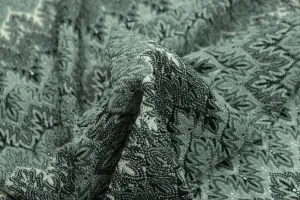Table of Contents
Simplex Machine
A simplex machine, speed frame or roving frame is situated after the comber in the yarn manufacturing process. However, the sliver which is produced from the comber is thicker and it is not suitable to feed into the ring frame directly to produce yarn. For this reason, the drawn sliver is treated before entering into the ring frame. An intermediate process is done before the ring frame. This intermediate process is done by a simplex machine or speed frame. Moreover, this roving frame converted the thickly drawn sliver into a thin sliver with a low twist and produced fine roving, which is suitable to produce yarn by feeding into the ring or others. The following are the principles of the roving frame:
Working Principles of Simplex Mchines
The rotating frame, simplex machine or speed frame works as the following flow chart:
Drawn sliver→ Speed frame/Roving frame/Simplex → Roving
↓
Roving → Ring frame → Yarn
In this process, drawn sliver is input and fine roving is output. This roving is fed into a ring frame for yarn production. It is noted that simplex is essential for the production of cotton yarn in the case of ring spinning.
Objectives Of Simplex Machine/Roving Frame/Speed Frame
The following are the main objects of the simplex machine:. They are-
- Firstly, drafting uses the attenuation of drawn sliver to form the required count.
- Secondly, a small amount of twist inserts gives the required strength to roving.
- Thirdly, wind the twisted rope onto the bobbin.
- Lastly, to build the roving to the full length of the bobbin in such a form that will facilitate handling, transfer, and feeding to the ring frame for yarn production.

Image Source: rieter
Functions Of Simplex Machine, Roving Frame, and Speed Frame
Various types of objectives are achieved by the simplex frame, like carding or combing action. The following are the main functions of simplex, roving or speed frame:.
Creeling
Creeling is the first objective of simplex frame arrangement. By creeling, a small amount of draft is applied to the drawn sliver.
Drafting
Attenuation of the drawn sliver to produce the required amount of roving by drafting. Thickly drawn sliver is converted into thin roving by the drafting system.
Twisting
A small amount of twist is inserted in the drafted stand of fibers by the twisting. The number of twists is very low.
Building
Build the roving onto the bobbin in such a form that will facilitate unwinding handling and transfer to the next process.
Winding
Produced or twisted roving is wound on the bobbin by the winding process. This bobbin is fed to the ring frame, and this bobbin accelerates the next process. So, it is important.
Doffing
It is the optional function of the speed frame. Doffing could be done manually or automatically.
So, the simplex machine plays an important role in the spinning process. Consequently, various types of yarn faults could appear due to wrong drafting or twisting. For this reason, the operator should be careful during the process. Hence, machine parameters should be set properly for producing specific counts of yarn.
In sum, proper roving can give yarn better properties. So, we should be careful about the selection of simplex, speed frame, or roving frame.





